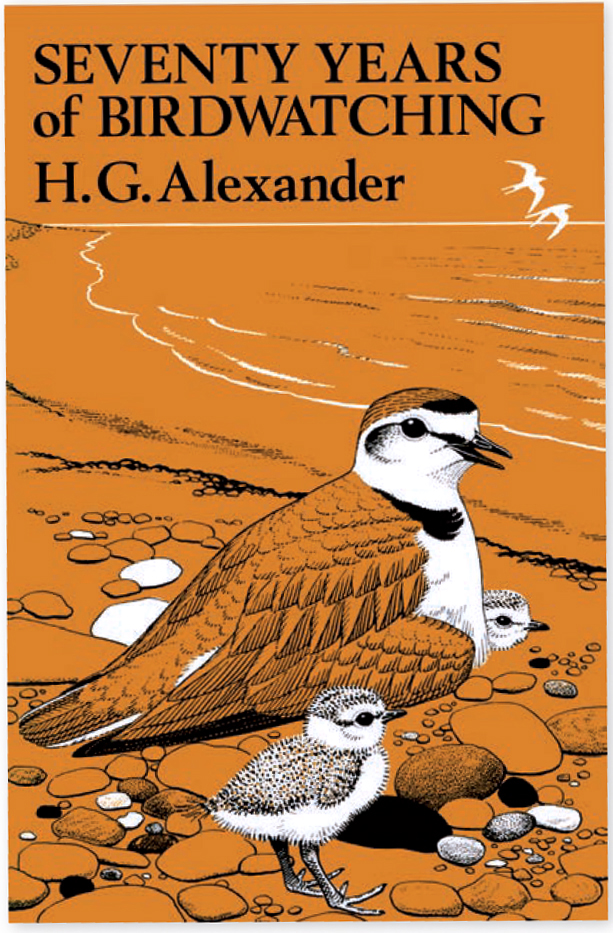
H G Alexander’s memoir demonstrated to younger birders and ornithologists just how rich, full and productive a life of observing birds could be.
72 : Seventy Years of Birdwatching by H G Alexander
1974

H G Alexander’s memoir demonstrated to younger birders and ornithologists just how rich, full and productive a life of observing birds could be.
Whether as a constantly evolving hobby or a multi-faceted vocation, a fascination with birds is often lifelong. Consequently, many aficionados lead interesting lives, to say the least. The fact that so many contribute to reports, journals, magazines and books, and are well travelled with a wealth of resulting material, means that towards the end of their lives the desire to put experiences down on paper can be irresistible.
The birding memoir has become a genre unto itself, and it’s difficult to label any particular book as the first, due to the prevalence of ornithological and biological biographies in the 19th century and even before. In fact, a life dedicated to the study or observation of animals and birds will make for an eventful journey, in both a literal and a metaphorical sense. For instance, Henry Seebohm (of courser and wheatear fame) wrote the posthumously printed two-volume Birds of Siberia (1901), a classic of privation and hardship, with redemption coming in the form of the birds.
Many of the great Victorian specimen and trophy collectors wrote biographies and bird-oriented travelogues, even before Audubon published Ornithological Biography (see pages 46–47). A number of these books made it onto the shelves of public libraries, where later generations of active birders were able to plough hungrily through the works of Guy Mountfort, Jim Clegg, Bruce Campbell, Jim Corbett, Frances Hamerstrom, Richard Meinertzhagen, Allan Moses and others, writing about Britain, the colonies and North America.
Inspiration abounded from such globe-trotting adventures, but with a more homegrown focus, perhaps no book epitomised the genre to greater effect than Seventy Years of Birdwatching by H G Alexander (1974). Chronicling the discoveries of a birding career which began in the reign of Queen Victoria and, at the time of completion, was still going strong in the Seventies era of Ted Heath’s government (albeit latterly with a more American focus), it captured many a birder’s imagination with what could be achieved with a life-long interest in birds.
Subsequently, a new kind of inspiration became apparent when Richard Millington’s A Twitcher’s Diary (1981) appeared on shelves, impressing on go-getting binocular-slingers just what level of listing could be achieved in one year, with spare time and determination (and perhaps either a private income or hefty credit). Many such books have come since then, often highlighting an extreme competitiveness that can be off-putting from what is often regarded as the fun sub-hobby of listing.
Birding memoirs and biographies still arrive annually today, and in quantity. A modern memoir often begins with a dramatic change in life, perhaps reflecting the contemporary writer’s more inward-looking stance. Job is lost, a divorce decreed, an illness diagnosed or overcome – a new lease of life, a freeing from some responsibility leads to a reconnection of the (usually) middle-aged (normally) male protagonist, with mixed results. Recent such volumes have tended to anal retention, often being a listing memoir appealing to a limited but committed audience – only birders can travel the world and have little to say about the culture and avifauna of the countries visited, just the numbers and species names.
There are exceptions to this, with authors like American Mark Obmascik, whose enjoyable The Big Year (2004) was made into a far more mediocre movie, and Australian Sean Dooley (The Big Twitch, 2005) creating reads that crossed over to members of the non-birding public by their literary merit and capacity to entertain.